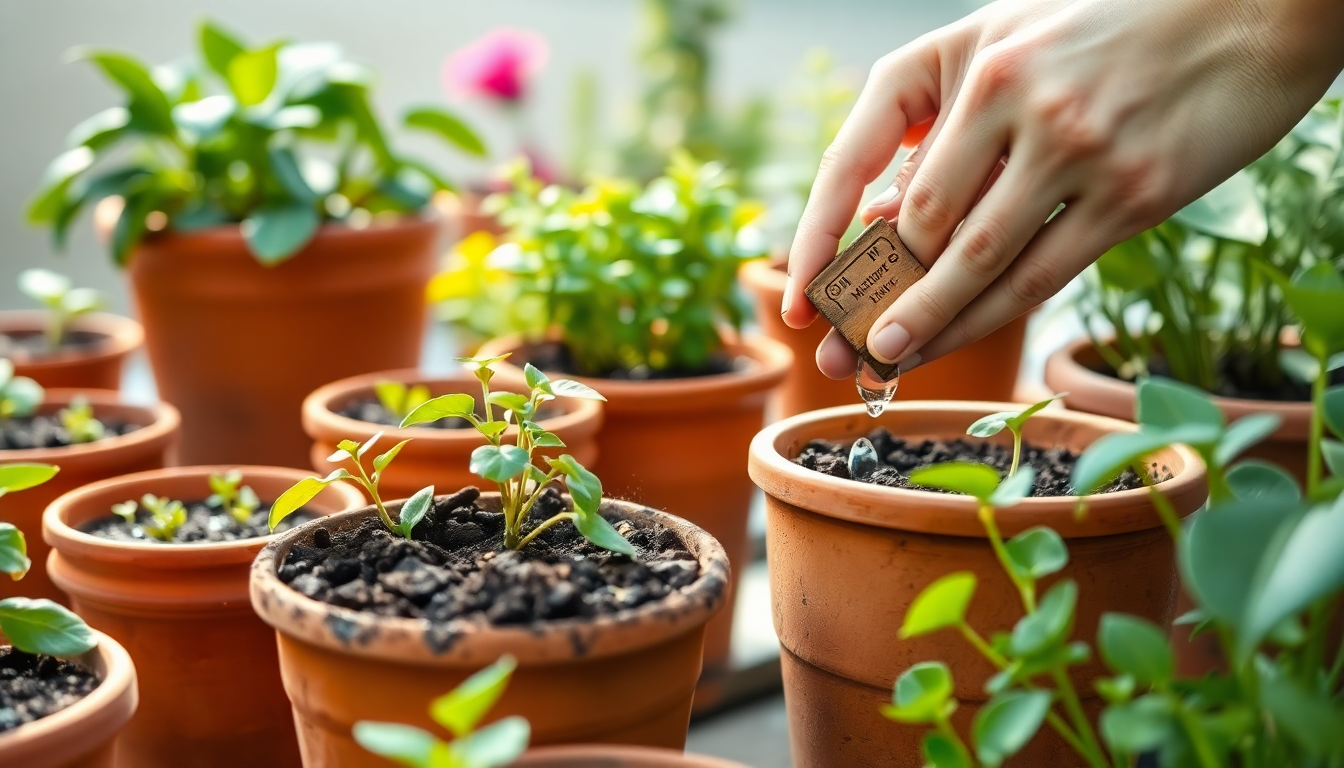As the sun rises over the lush gardens of HSR Layout, Bangalore, plant enthusiasts are faced with a common challenge - preventing overwatering in their beloved clay pots. Idyl, the one-stop-shop for all your gardening needs, is here to share expert tips and tricks to help you maintain the perfect balance of moisture for your plants.
Understanding Clay Pot Dynamics
Clay pots are a popular choice for urban gardeners due to their natural, earthy aesthetic and ability to provide excellent drainage. However, this very feature can also lead to a common problem - overwatering. The porous nature of clay allows for rapid evaporation, which can quickly lead to soil drying out if not monitored closely.
The Importance of Proper Watering
Overwatering can be just as detrimental to plant health as underwatering. Excess moisture can lead to root rot, fungal diseases, and even the eventual demise of your beloved greenery. On the other hand, allowing the soil to become too dry can also stress your plants and stunt their growth. Finding the sweet spot is crucial for maintaining thriving, vibrant plants in your HSR Layout garden.
Mastering the Art of Watering
At Idyl, we've compiled a comprehensive guide to help you navigate the delicate balance of watering your plants in clay pots. From understanding soil moisture levels to implementing strategic watering techniques, these tips will ensure your garden flourishes.
Assessing Soil Moisture
The first step in preventing overwatering is to regularly check the moisture content of your soil. Stick your finger into the potting mix and feel for dampness. If the soil feels saturated or water-logged, it's time to hold off on watering. Conversely, if the soil feels dry and crumbly, it's time to give your plants a drink.
Watering Techniques for Clay Pots
When it comes to watering clay pots, slow and steady is the way to go. Avoid the temptation to douse your plants with a heavy stream of water, as this can lead to soil compaction and poor drainage. Instead, use a gentle watering can or hose with a soft spray setting to slowly soak the soil, allowing it to absorb the moisture gradually.
Another effective technique is to water your plants in the morning or evening, when evaporation rates are lower. This helps ensure the soil has time to absorb the water before it's lost to the atmosphere.
Mulching for Moisture Retention
Applying a layer of organic mulch around the base of your clay pots can also help regulate soil moisture levels. Materials like shredded bark, leaves, or coconut coir can act as a barrier, slowing down evaporation and keeping the soil moist for longer periods.
Monitoring Drainage
Ensure that your clay pots have adequate drainage holes at the bottom to allow excess water to escape. If water is pooling in the saucer or base of the pot, it's a sign that the soil is becoming oversaturated and needs to be addressed.
Tailoring Your Watering Routine
Every plant has unique water requirements, and it's important to adjust your watering routine accordingly. Factors such as plant type, pot size, and environmental conditions can all influence the optimal watering schedule.
Considering Plant Needs
Some plants, like succulents and cacti, thrive in drier conditions and require less frequent watering. Others, such as ferns and hydrangeas, prefer consistently moist soil. Familiarize yourself with the specific needs of the plants in your HSR Layout garden to ensure you're meeting their individual requirements.
Adapting to Seasonal Changes
As the seasons change, so too will the water needs of your plants. During the hot, dry summer months, you may need to water more frequently to keep the soil from drying out. Conversely, in the cooler, wetter winter season, you'll likely need to reduce your watering schedule to prevent oversaturation.
Monitoring Environmental Factors
Environmental factors such as temperature, humidity, and wind can also impact the rate of evaporation and, consequently, your watering needs. Pay attention to these variables and adjust your watering routine accordingly to maintain the perfect balance of moisture for your plants.
Troubleshooting Overwatering
Despite your best efforts, there may be times when you inadvertently overwater your plants. Recognizing the signs of overwatering and taking swift action can help you get your plants back on track.
Identifying Overwatering Symptoms
Look for signs such as wilting leaves, yellowing foliage, and the presence of fungal growth or pests. If you notice these indicators, it's time to take a closer look at your watering practices and make adjustments.
Corrective Measures
If you suspect overwatering, the first step is to stop watering and allow the soil to partially dry out. You can also try gently removing the plant from the pot and inspecting the roots. If they appear brown, mushy, or foul-smelling, it's a clear sign of root rot and immediate action is required.
In severe cases, you may need to repot the plant in fresh, well-draining soil and adjust your watering schedule going forward. With patience and the right care, your plants can often recover from the effects of overwatering.
Embracing the Idyl Difference
At Idyl, we understand the unique challenges of gardening in the vibrant HSR Layout community. That's why we're dedicated to providing our customers with the knowledge, tools, and resources they need to cultivate thriving, healthy plants in their clay pots.
Whether you're a seasoned green thumb or a budding plant enthusiast, our team of experts is here to guide you every step of the way. Visit our online store or stop by our physical location to explore our wide selection of plants, fertilizers, and gardening accessories, all tailored to the specific needs of the HSR Layout landscape.
Together, let's embark on a journey of horticultural excellence and create the lush, vibrant gardens that make HSR Layout a true oasis of natural beauty.


0 comments